In the world of classic men’s shoes, one of the most well-known names is John Lobb Paris. With their long and decorated history, are the ready-to-wear shoes they offer today worth the hefty price tags? Let’s find out this installment of our Is It Worth It? review series!
When it comes to John Lobb, it can be a bit confusing. Today, the English John Lobb Ltd. focuses on bespoke shoes starting at $8,000 without shoe trees. The former Parisian branch of John Lobb, acquired in 1979 by the Hermes group, is also known as John Lobb Paris, and they sell ready-to-wear shoes that are not made in France but in Northampton, England.
The History of John Lobb Shoes
John Lobb was a Cornish farmboy who tried to become a shoemaker in London but was turned away. Subsequently, he traveled to Australia following the gold rush, and it wasn’t until then that he established himself as a respected shoemaker and bootmaker. His most famous invention was probably the hollow heel, which allowed the wearer to store gold inconspicuously.

A few years later, in 1863, John Lobb had the honor to make a pair of boots for the then-Prince of Wales. Fortunately, they were of such outstanding quality that he was awarded his first Royal Warrant, which John Lobb has held ever since. More specifically, they hold Royal Warrants as a bootmaker to HRH, the Duke of Edinburgh, and HRH, the Prince of Wales.

Three years later, in 1866, John Lobb returned to London and set up a shop in Regent Street. In 1880, he opened up a second shop just a stone’s throw away in Saint James’s Street. The idea was to be closer to London’s gentlemen’s clubs and the royal household.
Although that shop was destroyed during World War II in 1944, it still remains in Saint James’s Street today. As a fun fact, since 1963, they’ve been directly next to the famous hatter James Lock.
So, how did this English bespoke shoe company end up in France? In 1901, John Lobb’s son, William Hunter Lobb, established a branch in Paris. It really helped them expand internationally, and to this day, they see a lot of people during trunk shows and have customers all over the world.
Later on, in 1979, the Parisian branch of John Lobb was sold off to Hermes, and Hermes decided to start selling ready-to-wear shoes, which is why you can find them online at places like Mr. Porter or other outlets.
As we alluded to earlier, the whole John Lobb Paris versus John Lobb Ltd. is a bit confusing. To make it even more confusing, the English brand John Lobb Ltd. now also trades under John Lobb 1849. Whereas, the Hermes-owned French side simply is active under “John Lobb,” sometimes dropping the “Paris” part.
A Quick Look at John Lobb RTW Shoes
First of all, they’re made in Northampton, the spiritual home of the English shoe-making factories. All the big brands, such as Crockett & Jones, Tricker’s, Gaziano & Girling, Edward Green, and so forth, are made in that town. So, obviously, there’s a lot of knowledge around Goodyear welting and the shoemaking industry in general.
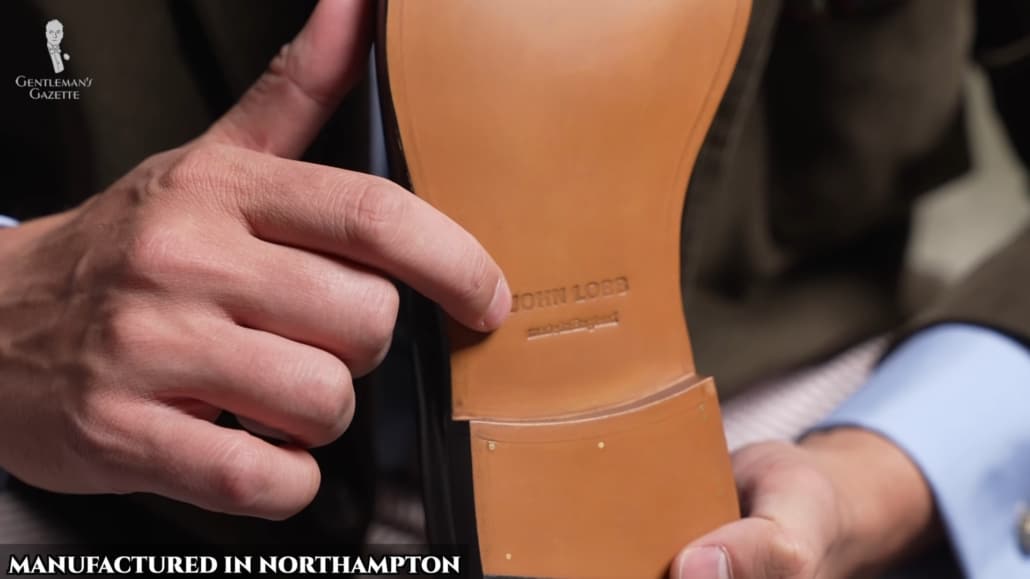
But, does “Made in Northampton” by itself make an exceptional shoe worth the relatively high price point of over $1,500? The short answer is no, because different brands use it for materials for different parts of the shoe, and even the construction process can be slightly different. That being said, most shoes coming out of Northampton are of high quality.
In terms of regular styles, John Lobb offers quite a bit. You have Oxfords, derbies, monk straps, boots, slide-style sandals, and even sneakers. I’m sure there was a time when decision-makers at John Lobb would have turned up their nose at the thought of a sneaker. But, as being part of a larger, more fashion-forward house, that’s the new reality, and it’s just part of the deal.
After all, they may be just listening to their customers! You could even describe them as a relative bargain, starting at £520 going up to £680, which is about $715 to $935 in USD.

On the other end, their classic range, where they have the most ready-to-wear styles, starts around £1,000 or about $1,400 in USD, going all the way up to a little over £1,500 or $2,100 in USD. This range includes their prestige line, which has a sole that has a special look.
If you want special anniversary models such as the William, which celebrates the anniversary of the monk strap, you can shell out close to £2,000 or $2,750 for that shoe.

No, it’s not a John Lobb bespoke shoe, but it’s still a very high-quality bespoke shoe out of the best materials that will fit your foot. With prices being that high, you can definitely find bespoke shoemakers who offer you a shoe for less. So, naturally, the question arises, how can it be possible that a John Lobb ready-to-wear shoe at those price levels is worth it?
Construction Details of John Lobb RTW Shoes
Let’s take a closer look at the construction of the shoes. First, we wanted to see how much the brands themselves shared with us. Their website categorizes materials, tools, and crafts, but honestly, we couldn’t find much information about the construction of the shoes there.
Really, it was more about the artistic features and the look of the site, not so much about the content. Personally, I like a bit more information when I spend a lot of money. But, I’m also likely not their target market.
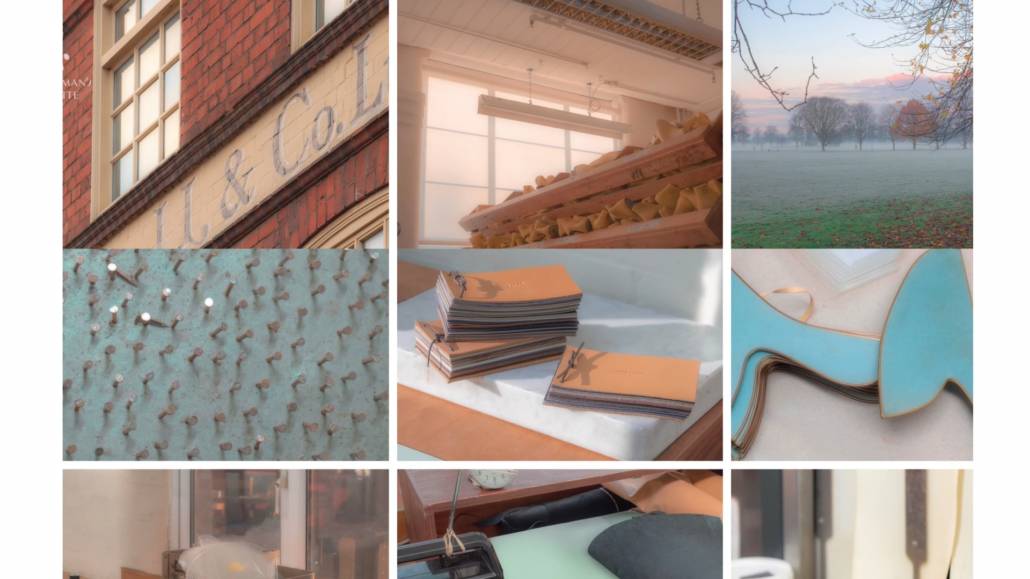
Yes, they do provide a few snippets of actual manufacturing video on their site, and based on that, it looks very much in line with other high-end makers from Northampton. But, it’s not enough to make a definitive judgment. There are quite a few pictures, but they’re often part of a collage, so it’s hard to recognize the details in them.
All non-sneaker styles are Goodyear welted. If you want to learn how it’s different from, let’s say, blank or hand-welded, we’ve got a guide for you! In Northampton, Goodyear-welted is definitely the gold standard. Since it’s a ready-to-wear shoe, it means there’s a gemband attached to the insole and the uppers, the linings are sewn onto that, and the welt is also part of the shoe.

The soles look very neat and are finished with closed-channel stitching, which means the sole is cut open first, then sewn, and then glued back down. It looks a bit more elegant than, let’s say, an Allen Edmonds shoe that has the visible stitching at the bottom of the sole.
That being said, other less expensive ready-to-wear brands such as Edward Green, Carmina, or Crockett & Jones Hand-Grade have that same closed-channel feature.
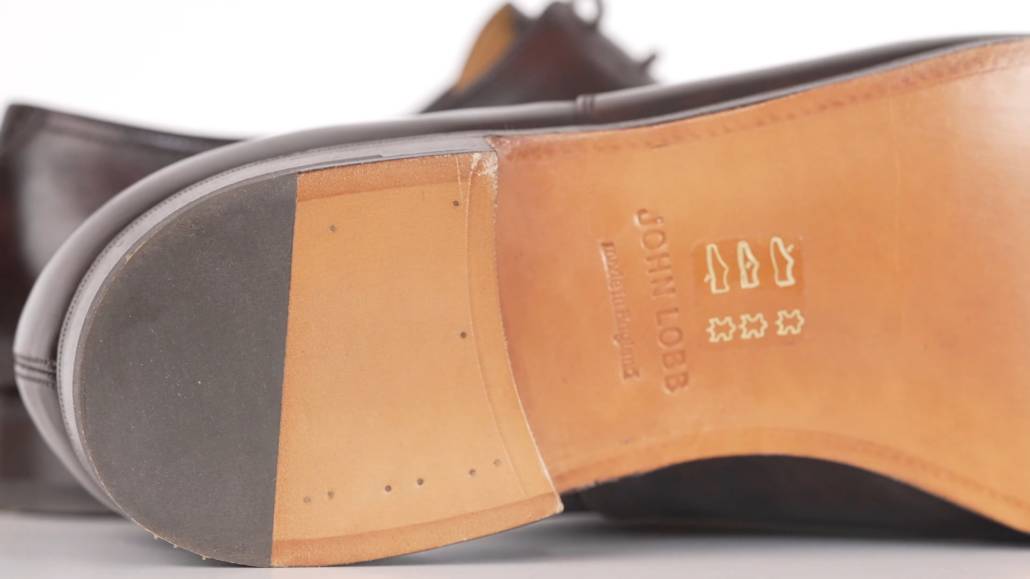
Interestingly, John Jobb Paris doesn’t provide a whole lot of information about the leather on the website. Maybe they assume it’s understood that they only use the best quality leather, whatever that means.
Obviously, you want a different leather for your gloves than you want for your shoes. But, having seen the shoes in person, I can attest that the upper leathers are of high quality, and they’re about as good as it gets. It all seems to be calf leather that is not sanded, not pigment-coated, and you get something that will stand the test of time and will be comfortable for you.
Still, I would have wished they told me a little bit more about what they do. I don’t expect that they share their tanners with me, as some smaller direct-to-consumer brands may do. But, at least, I want to learn more about the features. For example, is it aniline dyed or not? Is it chrome-tanned or veg-tanned? Just give me a little more information, please.
I have a little trick: if you navigate to their “create your own shoe” area of the website, you can learn more about specific leathers and other elements, but that information was not present on the ready-to-wear side.
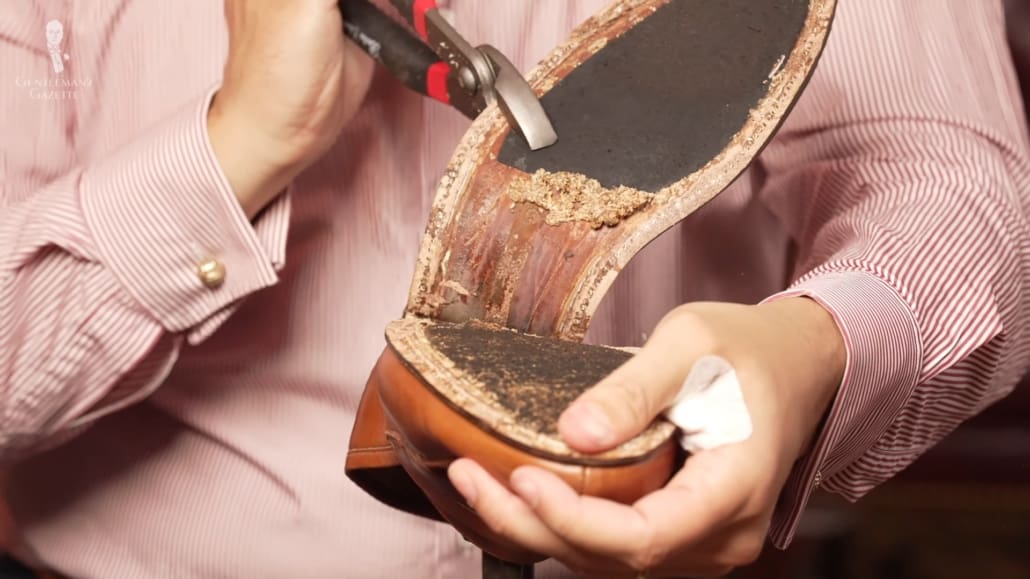
When you look at a shoe from the outside, there’s only so much you can tell about the inner ingredients and the workmanship. And to find out more about that, I cut open a Campus loafer from the John Lobb Paris ready-to-wear line.
What I found was – and I thought it was interesting – they had a kind of rubber layer glued underneath the outer sole. I suspect it’s because it prevents moisture from seeping in. They also had layers of fabric between the lining and the uppers, so you get a softer touch when you have your hands on the leather, which is a nice feature found in shoes from other shoemakers.

Their shank was somewhat of a composite material that was metal reinforced, and they had the typical cork and glue mixture that is part of most Goodyear-welted shoes. It also had a gem band and wasn’t made like a hand-welted shoe where the channel is carved out of the insole.
It has a full sock liner, which is nothing bad. It’s, in fact, good. I like them. It’s not necessary; some brands just have half sock liners. This is a full sock liner with a bit of foam underneath.
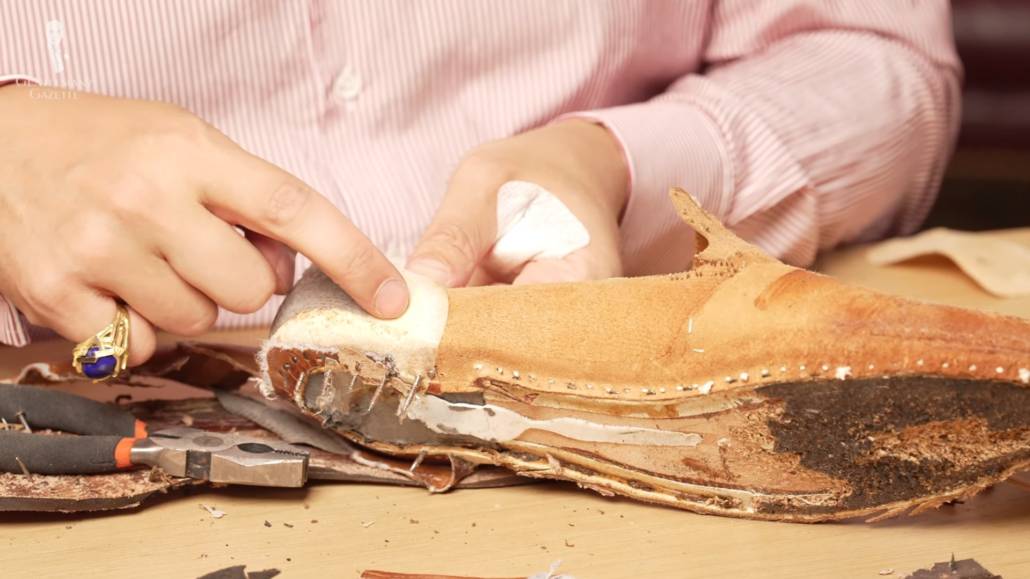
The heel cap is kind of a thermoplastic, and there’s also another element of foam on the sides, which makes the leather feel plusher, I’d say. The heel is heavily nailed, and they use higher-quality leather.
But, here and there, inside the shoe, you find a lower quality, kind of pressed leather that almost looks like cardboard. And I was disappointed to see that a shoe in this price range doesn’t have the highest quality leather on the inside, but just on the outside.
When it comes to classic menswear shoes, a higher price can also be justified by offering lasts in various widths, so you achieve a fit that you otherwise wouldn’t with a lower-end shoe. For example, other high-end makers such as Edward Green or Gaziano & Girling do offer multiple widths.
On the other hand, John Lobb does not offer multiple ready-to-wear widths, which, again, is disappointing. Especially people with very slim or wide feet appreciate different widths. If you’re curious about how a dress should fit, we have a guide that has you covered.
A Closer Look at Styling Details
When it comes to higher-quality menswear shoes, sometimes, little details warrant a considerably higher price. So, let’s see if John Lobb offers any of those things that shoe aficionados appreciate or willing to shell out a lot of money for.
Waist Area
One of those details is the waist area, which is in the sole in the middle part of the foot or the shoe. You can have a nice rounded beveled waist or, for example, a fiddleback waist, which is typically something you find in bespoke shoes, because it’s harder to make a slim waist shoe in a ready-to-wear factory setting.

That being said, higher-end ready-to-wear shoe brands such as Gaziano & Girling have found a way to incorporate these typical bespoke features even into their higher-end ready-to-wear line. John Lobb, on the other hand, is again rather disappointing.
If you look at them, there’s nothing obviously wrong. But, they obviously lack the nicely beveled waist or the finesse of a fiddleback that you find at comparably priced shoes that are even less expensive than John Lobb.
For a pair of shoes, it really matters how they look, and the shape of the last very much influences the look. And I think the lasts from John Lobb are elegant and sleek. But, they’re not over the top and extreme, which is ideal if you’re interested in a classic men’s wardrobe because it’s something they can wear for years and decades without ever going out of style.
Obviously, the exact last shape that you like is a very subjective personal thing. And in my mind, the City II last was really nice. It’s long and round but very sleek. Compare that, for example, to an Allen Edmonds Park Avenue, which is the same type of Oxford style, but, in my mind, they look very, very different, and the John Lobb looks much more expensive than the Park Avenue.
Heel
Another detail in high-end men’s shoes that can warrant a lot of money is the heel. Bespoke heels are constructed one by one, layer by layer. And they’re often slightly angled towards the inside, which can also be known as a “Cuban heel,” and they just look much more elegant than, let’s say, a chunky heel from a brand like Allen Edmonds.
So, honestly, the majority of the Goodyear-welted shoe market has that simple straight heel block that is often bought pre-made and then just attached. If you don’t pay much attention to it, you might not notice. Still, the connoisseur will definitely recognize the difference between the somewhat clunky, straight, ready-to-wear factory heel and a finely-made, custom, or high-end shoe heel.
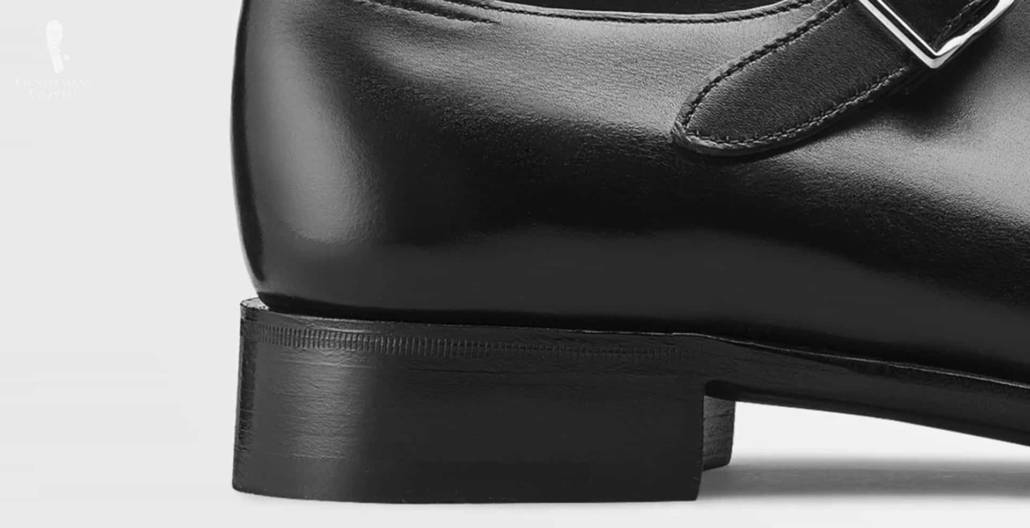
In direct comparison, look at the ready-to-wear shoe from George Cleverley, for example. The heel of the William 75 model, which is, again, a £2,000 or $2,750 in USD shoe, pretty much looks like one on a $300 shoe. You can see it’s slightly higher in the back, it’s a bit more angled, and it realizes a nice transition into the wait.
Why do heels and higher-end shoes have that gentle slope? Well, the shoe looks less chunky, and it just works much more harmoniously with the shape of the heel of your foot. Sadly, John Lobb is not up to snuff in that category, and that would have been especially something where they could have justified their price.

So, again, the George Cleverley cost about £1,100, a little over $1,500. The William is close to £2,000 ($2,750 in USD).
Polish and Shine
Also, when I took the John Lobb shoes out of their box, they had a relatively dull shine, which means just a bit of cream polish was applied by a machine. Compare that to, let’s say, a Gaziano & Girling shoe. When you get that, it has that high shine right out of the box, which is a lot nicer, and it means you have to spend less time polishing your shoes when you get them.

What’s the price of Gaziano & Girling Sinatra, for example? It’s about £985 or under $1,500 in USD. Well, maybe, if I pay all that much money, they’ll throw in a nicely fitted pair of shoe trees, which would be beneficial for the longevity of my shoe…
Shoe Trees
Nope! Speaking of shoe trees, at John Lobb, you have to buy those extra. That costs you another £135 or $185 in USD just for the shoe trees. The nice thing about factory shoe trees is that they know their lasts, and they can make the shoe trees the exact same size, which is something you, typically, get from a bespoke shoemaker.
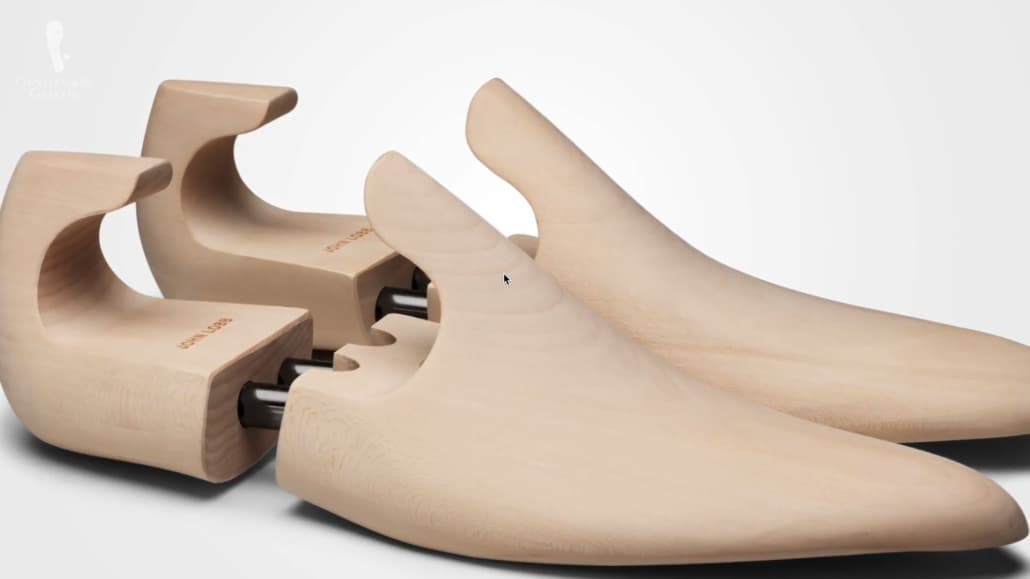
But, at that price point, you might be better off just taking a less expensive pair of shoe trees and having them adapted. In any case, it’s better to have some kind of shoe tree than no shoe tree. The shoe tree helps get the shoe in a natural stretch shape on the uppers, especially in the creases.
What can happen is if you wear the shoe all day and your feet are sweating a little bit, when you just take off the shoes and let them sit there, they’ll dry out in that unnatural shape. And so, they just don’t look as nice anymore, and you’ll get more cracks in the leather earlier on.
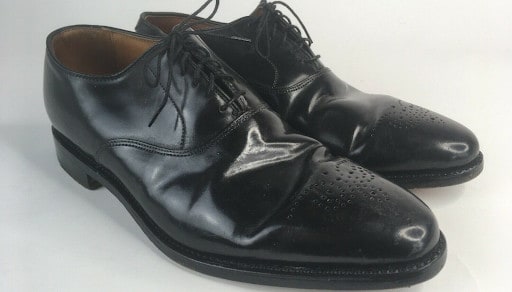
If they’re in a shoe tree, they get back in natural shape, can dry in that state, and you can wear them again. That’s why you always want to rest your shoes for at least a day, better two days between wearings and you’ll enjoy them for much longer.
How Do John Lobb Paris Shoes Fit?
We got two City II models and two Lopez models. The Lopez is a loafer, and we got them in different sizes, just like the regular City II Oxford style, so we can see and give you advice on what you should go for if you consider buying one.
The heel was surprisingly tighter than many other ready-to-wear brands, which is something I appreciate very much because I have slim heels. But, typically, in a bespoke shoe, you also get a nicer heel grab than on many ready-to-wear Goodyear-welted shoes that are just boxier and wider in the heel.

This becomes particularly important for loafer shoes because you don’t have the lacing system that keeps your shoe on the vamp tightly on your foot. Normally, for most shoes out of Northampton, I have a size 10 and a half UK. The size 10 fit me reasonably well for a loafer.
The John Lobb City II ran a bit larger, so the size 10 fit me better than a size 10 and a half. The same was true for the Lopez loafer. I think I have a few ones from Scarosso that fit me even better. But a 10 and a half was way too large, and my heel slipped out big time.
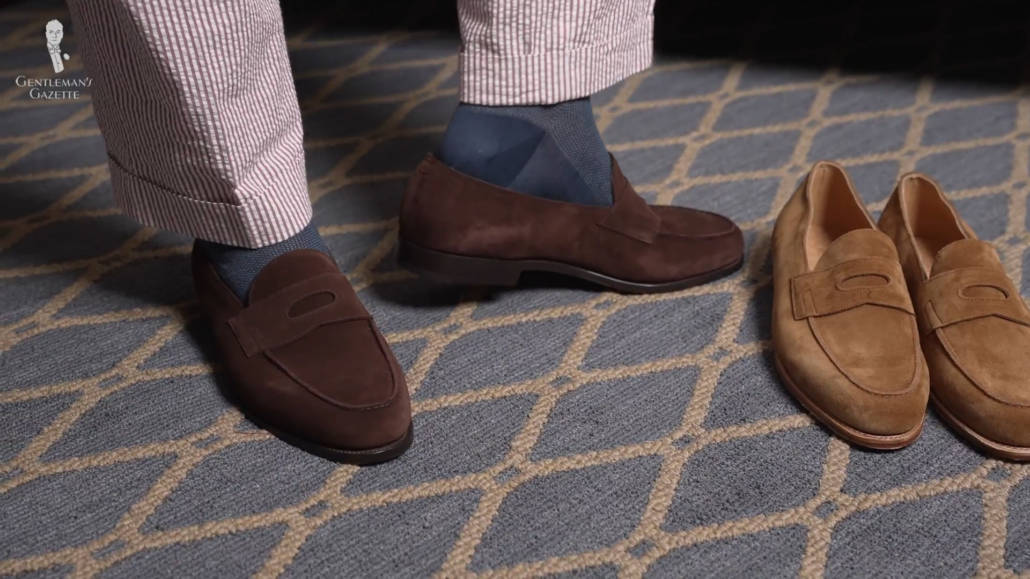
Even in size 10, it wasn’t a perfect fit, especially since most people have feet of slightly different sizes, but ready-to-wear shoes have the exact same size.
The Verdict: Are John Lobb RTW Shoes Worth It?
Yes, but…
I say, yes, they’re worth it only if you want the John Lobb brand name and you cannot afford the bespoke shoes. Maybe you also don’t want to wait for a pair of bespoke shoes, or you can’t travel, or you just want to buy exactly what you can see and get, and you want that prestigious John Lobb name.
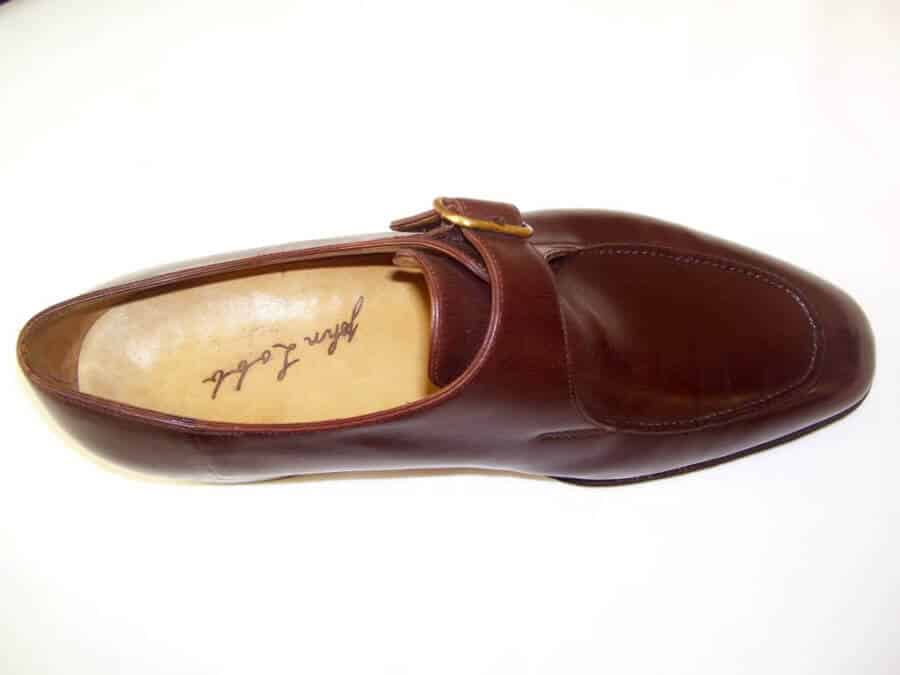
Fortunately, classic high-end men’s shoes don’t have any labels on them, like Gucci shoes with a famous colored strip or, let’s say, Louis Vuitton shoes that are obviously branded.
No, because…
I would say a John Lobb ready-to-wear shoe is definitely not worth your money if you care about the bang for your buck because they’re very expensive for what you get.
I don’t think they’re worth it if you want a shoe with great finesse that has bespoke-inspired details. Even if you love their last shape the way I do, I believe that you could find a very similar last shape or, sometimes, maybe even more attractive last shape from other high-end makers for less money.

Yes, they have quality leather on the outside. But there are definitely elements on the inside where they could use better stuff. I think John Lobb shoes can be worth it if you, maybe, find them steeply discounted, you like their last shape, and they fit you really well. It’s not like they’re overall of bad quality. They aren’t. They’re just super expensive for what they are.
Frankly, I can’t list all the brands out there that are kind of in the same league, but I mentioned a few of them. Gaziano & Girling, Edward Green, Crockett & Jones Handgrade, George Cleverley, even like Carmina, for example, have nice shoes that are construction-wise at a level with John Lobb, maybe even better.

And in terms of leathers, they all use very high-end materials. With some of those brands, you can buy two or three pairs of shoes compared to just one from John Lobb for the same amount of money.
So, personally for me, in my book, John Lobb ready-to-wear shoes are definitely not worth it even though I like the last style because, for $1,600 or even $2,750 in USD, I can go to my local bespoke shoemaker, get exactly what I want with a superior fit, including shoe trees from a true craftsman with all the details that I want for less than what Lobb would charge me for.
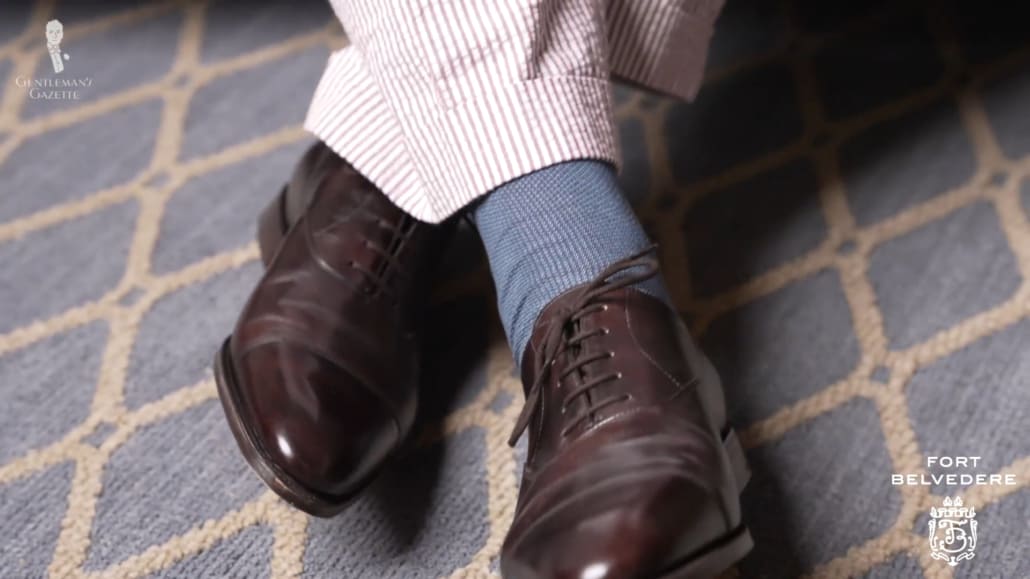
But then again, I do not buy just for the brand. I enjoy quality and craftsmanship, and I don’t care about the brand name.
Outfit Rundown
I’m wearing an olive green corduroy sports coat with patch pockets. I’m pairing it with a light blue shirt and a wool knit tie from Fort Belvedere in gray and red. My pocket square is wool silk from Fort Belvedere that picks up the color of the red, the green, and the blue, so it ties it all together just like my boutonniere. All of which you can find in our shop. The jacket is made by Hemrajani.
My slacks are seersucker from Burley. And they’re not blue and white like most suckers out there, but red and white that pick up the tones of the tie and the pocket square. My socks are also from Fort Belvedere. They’re cotton two-tone solids in a Russian blue and kind of lighter blue. Shoes are, of course, John Lobb ready-to-wear. This is the City II in a kind of antique patina leather, which is very nice. But you can get this letter from qualified Italian tanneries no problem if you really wanted it done bespoke for example. Last but not least, the gold monkey fist nut cufflinks are, likewise, from Fort Belvedere and you can find them in our shop.
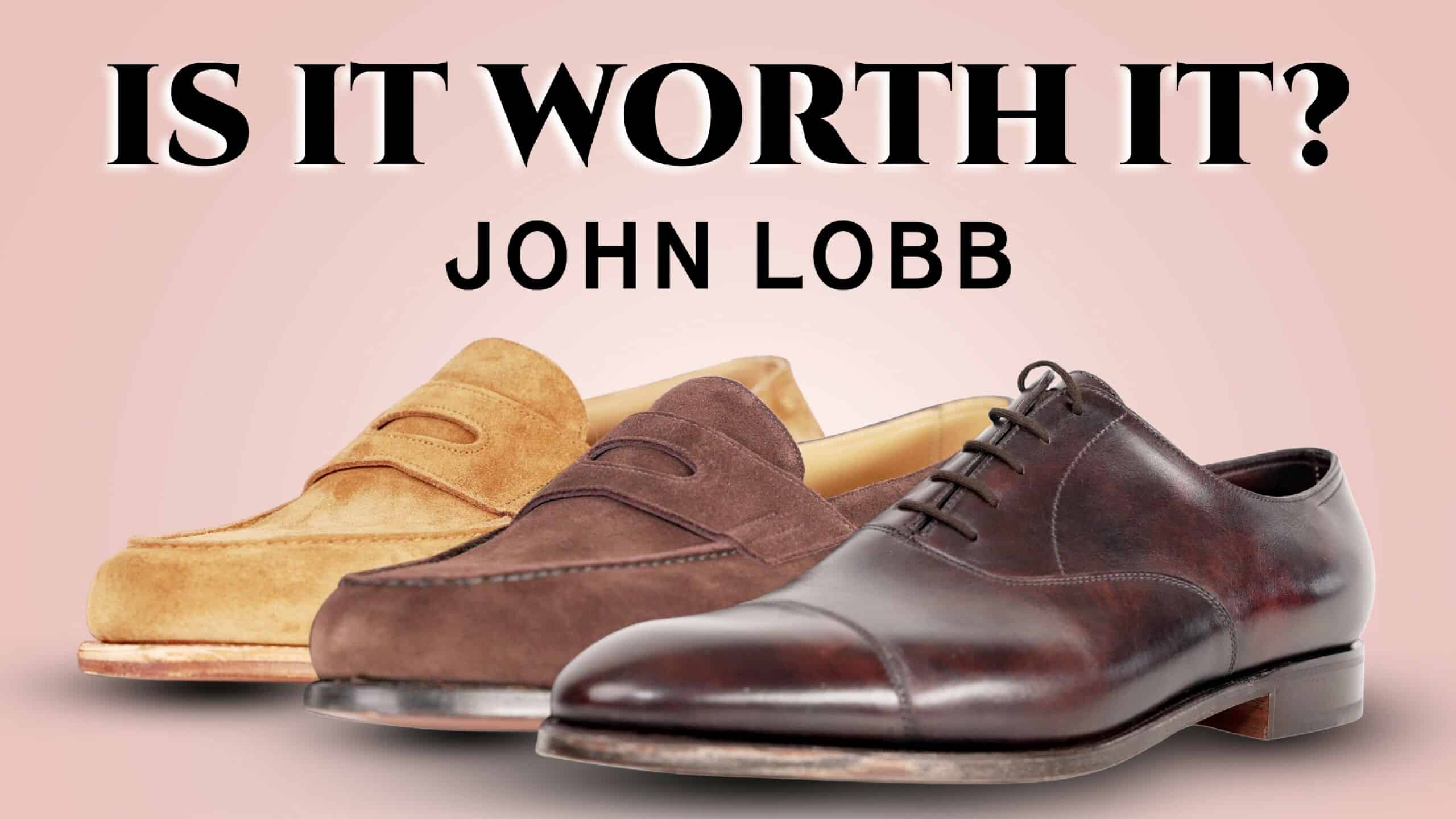



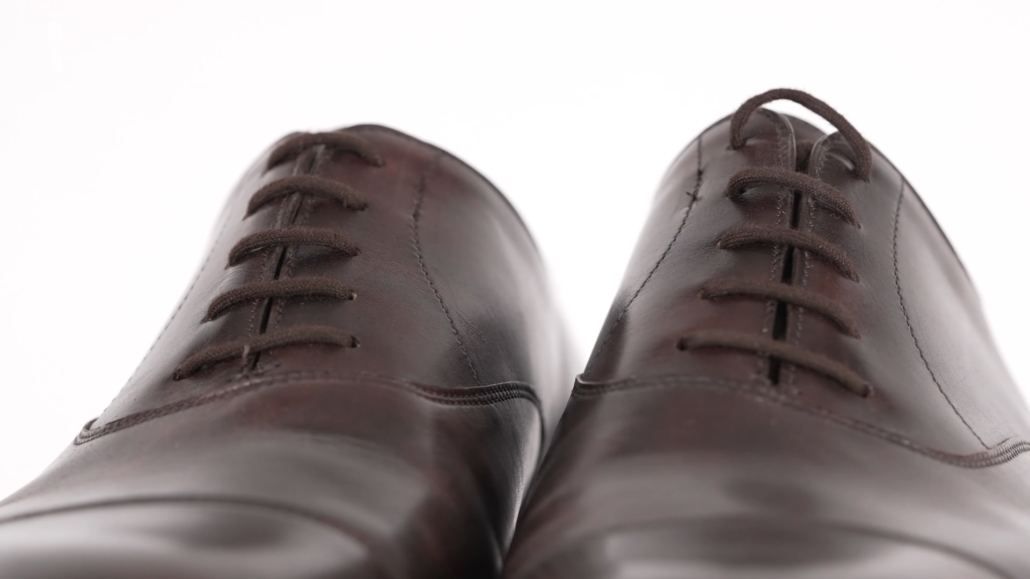



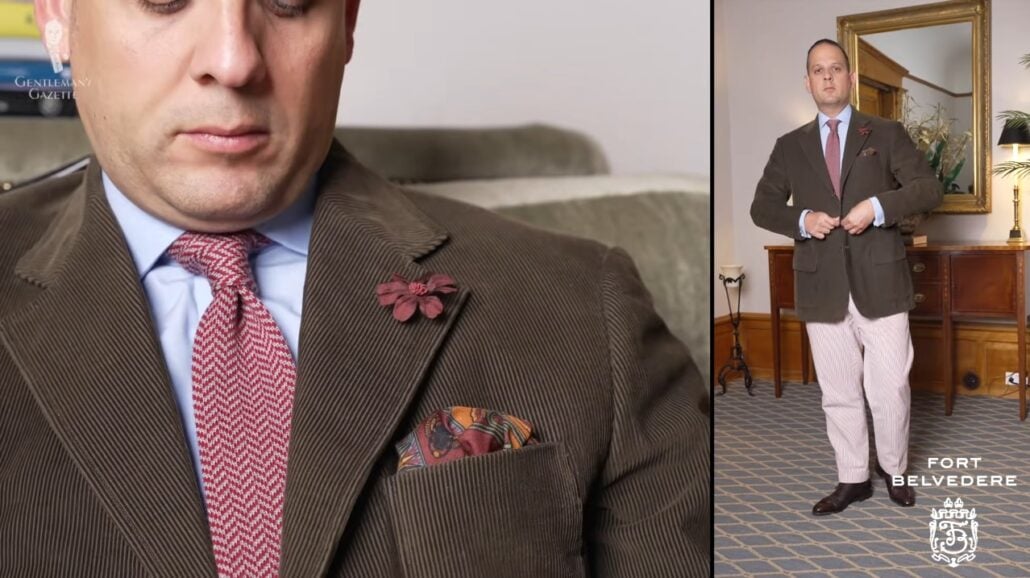
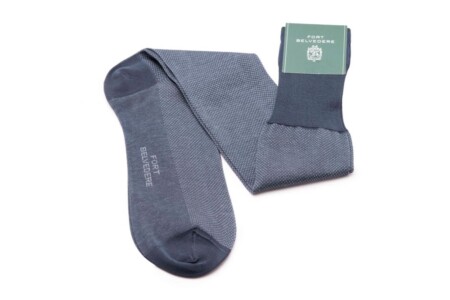
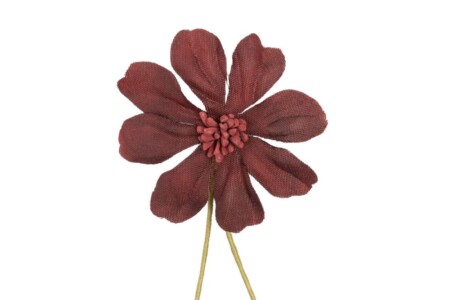
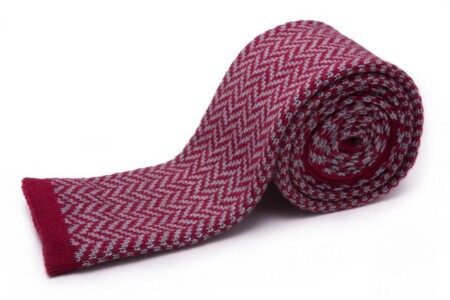
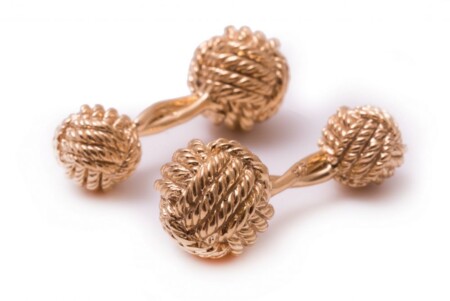
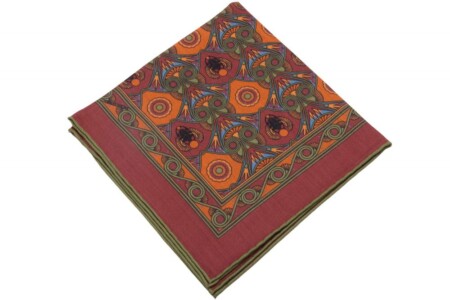
Like always, paying through the nose for a high end brand is more about snob appeal than value for money; the most comfortable and well made formal wear shoes I own, were handmade in Taiwan and cost me the grand sum of $100 Australian, buying direct.
Thorough and detailed review.
I was thinking that the way that you weighed the pros and cons at the end like a wishy-washy politician that you were going to state that they were worth the purchase. I agree with your opinion.
Excellent review.
I was surprised to see you wearing a corduroy blazer with seersucker trousers. (Fall and Summer components respectively.)
Glad to hear you enjoyed the review! We believe it’s important to consider both sides of a topic, especially when discussing expensive or iconic clothing items.
Thank you Sven, brilliant review, and most interesting to read.
Years ago I bought the William monk strap (sort of a once-in-a-lifetime thing), since I just loved the style, and it felt perfect from the very beginning. They are still on duty, though I am a bit disappointed from the leather durability: the upper side showed some cracks pretty early, in spite of decent care & trees.
Bang for the bucks: Meanwhile I would rather go for something made to measure, should I spend such a considerable sum for a pair of shoes again.
Useful analysis, especially the comparative comments about GG, Carmina etc. But I don’t care much about the construction. My “buy or not” decision is made on style. With a dozen pairs in rotation, monthly polish and regular professional repairs, my shoes last 20 years and still look great. These include Brooks, To Boot, Zelli, G&G, Berlutti, Carmina, Cleverly and others. Thanks for writing about shoes, reputedly the first thing a woman notices!
Hi Richard, it sounds like you have several well-constructed pairs of shoes indeed, and are practicing good shoe care. Thank you for sharing!
I agree with your review. I have worn Alden shoes for years, and would like your opinion on that brand.
Thank you for a great education on John Lobb. Even having pairs of Lopez , I never knew that much, even having worked for Hermés in the crazy 80’s.
I have Westons which again ,I had to try.
But these are shoes I will keep as long as They fit me !
The Lobbs are ready to wear and they had 2 wider widths choices which sold me!
I hope we will get past Covid and I will have places to wear them again!
Thanks again for your thorough reviews!
Thanks for your kind words, Sims!
Great review – and yes, snob appeal and limitless budgets from the very privileged few keep Lobb alive. However, with some internet searching, one can find great bargains on older model, lightly worn Lobbs – even on eBay. One has to be ok with wearing used shoes … tho a good friend used to put his new lobbs in a window for a year to weather the color and leather for just the right look. To each his own. I bought several amazing croc and Jodhpur Lobbs over the years from a lovely shop called Bertie Wooster on Fulham Road in London. Around 200 quid each pair as I recall. I must have 4 pair at least from there. Shoes from the 1930s-40s (said Lobb in nyc) – incredibly well made, bespoke for some toff long gone, soles totally intact, — they are amazing shoes. Sadly Bertie Wooster closed more than a decade ago, but they are other consignment clothing stores. Lobb shoes can last a century or more. If you don’t mind wearing someone else’s fabulous shoes … you can save a bundle and wear something truly unique. Many specific Lobb styles have changed slightly over the years. You will have very special shoes indeed!
Hello, nice review of JL brand. I live in London and I have the opportunity to visit all this stores on Jermyn St. I can say that Edward Green, even if they didn’t have G fit on the store they were happy to make one for me at the same price. JL does not offered. Anyway, I just got a pair of William in museum brown for £519, nice discount from the original price of £1015. Very happy with my buy! Colour of the shoe is amazing! Thanks
Nice read. Happy to see extensive reviews.
A few points..
Shoe trees don’t come standard from the vast majority of manufacturers. The only exception I can think of is Gaziano & Girling (and they just started including them 5 years or so ago).
Cleverly is an example of getting fitted in person even when looking at ready to wear options. I myself find that they run smaller than Edward Green when comparing some size/width.
JL Paris offers 2 widths on their website. Many of the competing manufacturers you mentioned only offer 1-2 options before having to pick up the phone and order special. G&G has 3 options but only 2 available with a 6-8 week wait time fir the D. Odd sizes are often difficult (I can’t even try on a pair of shoes in the London Edward Green shop).
Speaking of odd sizes…they are advantageous during end if the season sales which brings me to…
Pricing…shoe manufacturers are under the same pressure to change around styles seasonally as the clothing companies. Those prices you mention are often halved during sales so unless you’re looking at a limited run item, there’s not much need to pay the full retail prices on those. I’m just as happy with my Edward Green captoe Oxfords at £500 than £1000.
Shoe trees used to be a bit controversial on the sartorial websites. While all 50 some pairs of my shoes have trees in them when my feet aren’t in them, it has been widely debated as to how much good they do after a day or 2.
Carmina, Allen Edmonds, and Alden are all good cheaper options. I use Carmina for my nasty weather shoes and keep the G&G, EG’s, Vass, St, Crispin’s, etc for less troublesome weather.
I have several pairs of Alden for their Shell Cordovan options. Of course upkeep and maintenence is important, I’ve put some of them through worse conditions than my boots in the Army and they’re still looking good 20 years later.
A small point…it’s great having welted shoes that can easily be resoled but quality resoling isn’t cheap either. It cost me £270 at EG to get a pair of EGs done and another £50 for the toe taps. My local guy charges about half that (still not “cheap”).
JL Paris has been known more of a fashion brand for quite awhile.
Well, that’s probably enough rambling for a random article Google automatically loaded .
Hi Christopher, glad to hear you enjoyed the article!
Absolutely right about shoe trees not being included as standard for the majority of the manufacturers. We found that when researching for this article, John Lobb Paris offered some models with shoe trees, but not others. As far as the discussion for how many pairs of shoe trees a person needs, I agree with you that all of my shoes have trees in them, which is why we felt it appropriate to include the point about shoe trees not being included as standard.
At the time of writing the article, there was no way to differentiate between sizes, widths, or even the ability to purchase shoes from the John Lobb Paris desktop site! Both myself in the UK and the team in the USA couldn’t find any information about how to choose between widths or how to make a purchase, which we found to be quite bizarre for a brand with such a prestigious name.
Regarding items going into the sale, it can certainly be a great way to invest in some quality shoes at less than retail prices and is something I’ve done on several occasions. However, the shoe models we selected for this review are John Lobb Paris’ standard lines of a cap-toe Oxford and a penny loafer. Whilst some models or variations may become reduced in price, it’s usually a fair assumption that these classic lines tend not to become subject to sale pricing.
Good to have these in-depth discussions about style! Feel free to comment on any other articles which grab your attention.